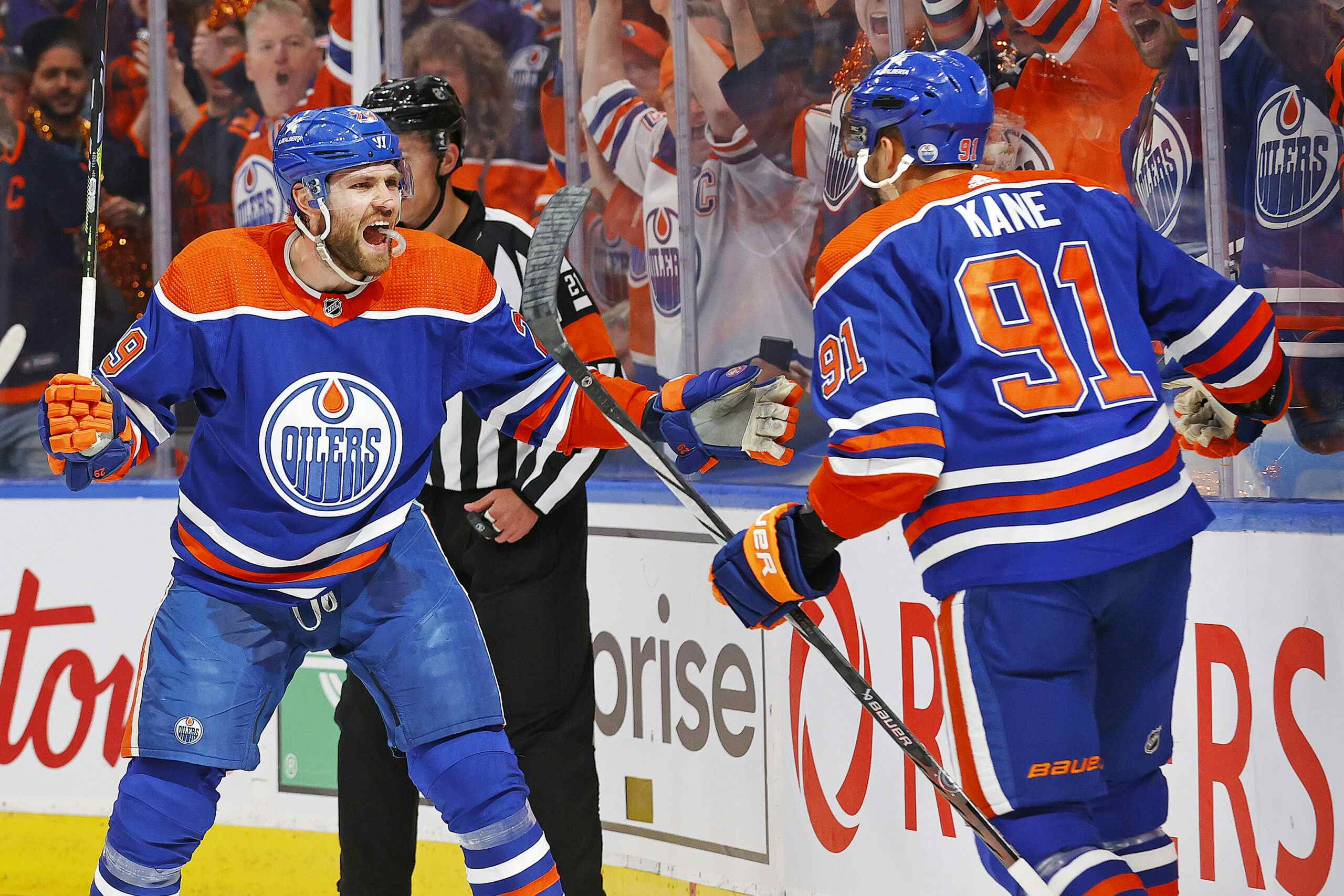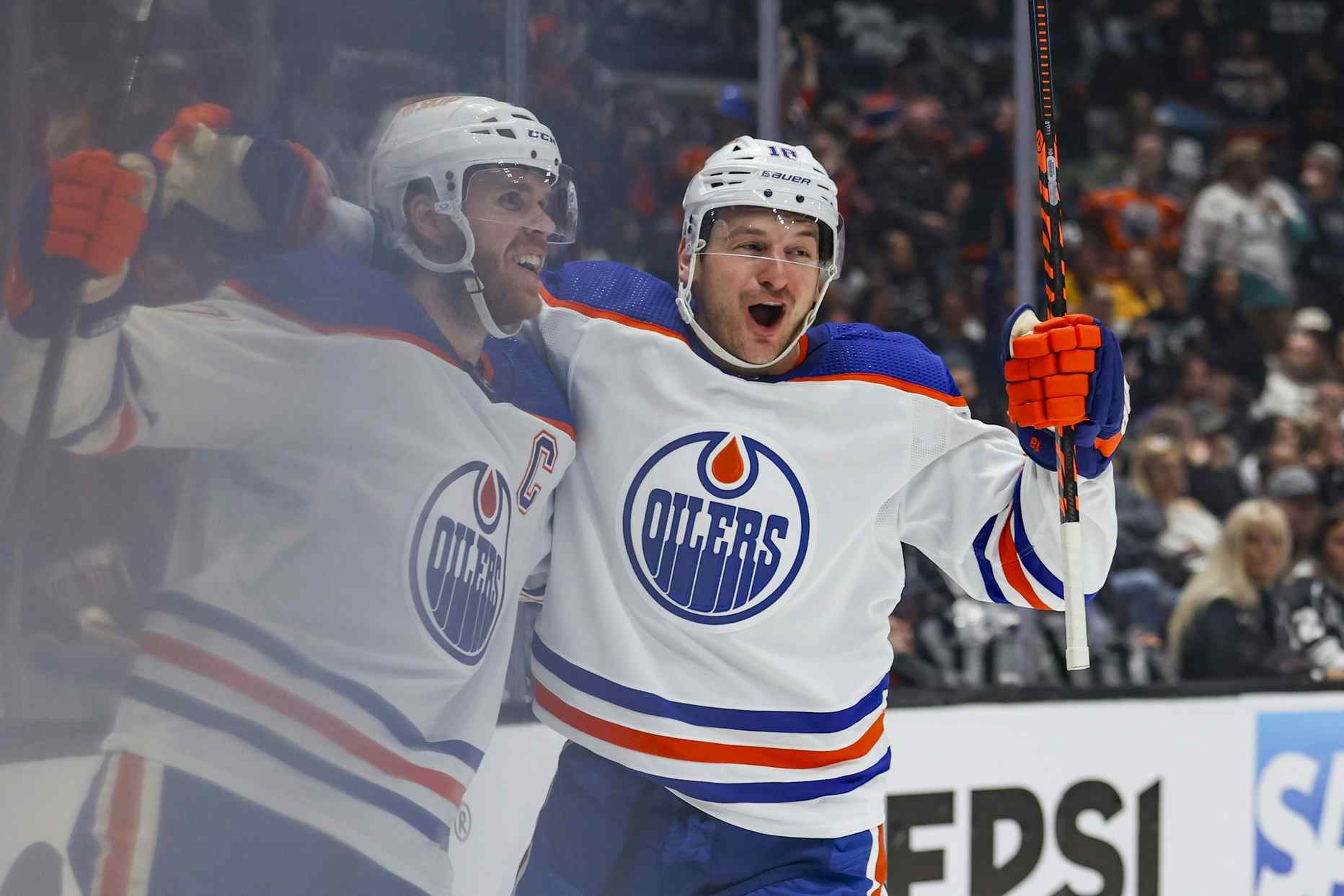You Don’t Know What You Don’t Know
By Lowetide
12 years ago
Hockey’s Future has their latest Oiler top 20 list up (courtesy Lawrence Bailey) and it’s an interesting and informative list. It gives the reader a nice overview of each player and where they stand in the organization. I mention it because it brings up one of my favorite subjects: how best to evaluate a prospect.
The HF rating system (I can’t find a more updated version than this 2004 version) combines numbers and letters in a dizzying attempt to define a prospect’s outer marker as a player (that’s the number) and the likelihood that he will deliver (that’s the letter). So, Ryan Nugent-Hopkins’ current number is an 8.5C. Let’s have a look at what that means:
- 9 – Elite forward / defenseman / goaltender — possesses the potential for greatness, a likely Hall of Fame candidate once his playing days are over. Think Mark Messier, Guy Lafleur, Niklas Lidstrom, Denis Potvin, Patrick Roy, Martin Brodeur – definite Hall of Fame players that displayed great talent early on.
- 8 – First line forward / No. 2 defenseman / No. 1 goaltender — players with definite skill that might be just a cut below elite status, but still possessing Hall of Fame potential. Think Brian Propp, Larry Murphy, Tom Barrasso – players that display talent early on, but may not be the game-breakers that the elite players can be.
- C – May reach potential, could drop 2 ratings – has shown some flashes, but may ultimately not have what it takes to reach his potential. The potential rating is multiplied by 80 percent to show the uncertainty of a player reaching his potential.
So, we can assume that HF believes RNH is halfway between a first line forward and an elite forward who has shown some flashes but may ultimately not have what it takes to reach his potential. Fair?
Is there a better way?

Long time Lowetide readers are now likely rolling their eyes or checking out the picture below (stay here dammit!). It’s something I drag out from time to time and I’d love to share it with you.
My idea is basically this: why don’t we go with what we know? Why don’t we list a player’s age and then find a bunch of guys from history who had a similar path through junior. Perhaps we can marry the two together and find a reasonable projection for the new player. The idea is to start with a group of player levels, like this one:
- Player of unknown quality
- Entry level junior/college player
- Fringe level junior/college/2nd div Euro player
- Regular in junior/college/2nd div Euro player
- Quality junior/college/2nd div Euro player
- Impact junior/college/2nd div Euro player
- Minor League/Elite Euro league Depth Player
- Minor League/Elite Euro league Regular
- Quality Minor/Elite Euro league Player
- NHL Fringe Player
- NHL Role Player
- NHL Regular
- Above Average NHL Player
- Impact NHL Player
Now, let’s have a look at some Oiler players from the last decade’s drafts and see how they progressed:
Ales Hemsky
- 17-6 (impact junior)
- 18-6 (impact junior)
- 19-11 (NHL role player)
- 20-12 (NHL regular)
- 21-12 (NHL regular)
- 22-13 (Above average NHL player)
- 23-13 (Above average NHL player)
Jarret Stoll
- 17-5 (Quality junior)
- 18-6 (Impact junior)
- 19-6 (Impact junior)
- 20-8 (Minor League Regular)
- 21-12 (NHL regular)
- 22-12 (NHL regular)
- 23-12 (NHL regular)
Marc Pouliot
- 17-5 (Quality junior)
- 18-5 (Quality junior)
- 19-6 (Impact junior)
- 20-8 (Minor League Regular)
- 21-11 (NHL Role Player)
Rob Schremp
- 17-5 (Quality junior)
- 18-6 (Impact junior)
- 19-6 (Impact junior)
- 20-8 (Minor League regular)
Andrew Cogliano
- 17-5 (Quality junior)
- 18-5 (Quality college player)
- 19-6 (Impact college player)
- 20-12 (NHL regular)
Sam Gagner
- 17-6 (impact junior)
- 18-12 (NHL regular)
- 19-12 (NHL regular)
- 20-12 (NHL regular)
- 21-12 (NHL regular)
Ryan Nugent-Hopkins
- 17-6 (impact junior)
So, we can look at Hemsky and perhaps see where he turned the corner (age 22); that might be a clue about Sam Gagner’s 11-12 season. And if Gagner doesn’t emerge as something more than an NHL regular? Well, that tells a story too.
Also, we can see that RNH, Gagner and Hemsky were all in about the same spot at 17-years old. Hemsky spent another season in junior and Gagner came right to the NHL. Should RNH go either way, we have a comparable within the organization. We could also expand the pool, and answer questions like "how many times does an impact junior turn into Steven Stamkos by following the same route?" and I think it could be a better way to track prospects. I’m not saying it’s a perfect plan, but it does one thing very well: it asks only what the player is at his current age. No projecting and no biased Oiler fans slotting said prospect miles above reasonable.
We identify the prospects who develop quickly, and ask history to tell us about similar players from the past. We’re not worried about trying to figure out if a kid is going to be a third liner of a first liner. We also don’t imply a third liner cannot possibly have a value greater than a 1st liner, we don’t care. We don’t imply we "saw him good", we concern ourselves only with what they’ve accomplished and what good players have accomplished in the past at the same age. We’re dealing with prospects across leagues and ages and putting them on a line based on their established level of ability.
What does it all mean?

Projecting youth into the future is an extremely difficult thing to do. My argument is that it’s better to project based on what these kids have done and comparing them to history instead of giving them a number and a letter. I have no idea how a person would decide that RNH is a "C" as an example. If it’s based on a list of similar young men with similar backgrounds and pedigree then I stand corrected, but would suggest HF publish the list.
I think HF does a fine job and the Oilers top 20 is a very worthwhile read. However, I can’t find many 1st overall picks who could reasonably be described as Nugent-Hopkins is described (8.5C). I think we’re better off going with what we know.
Recent articles from Lowetide





